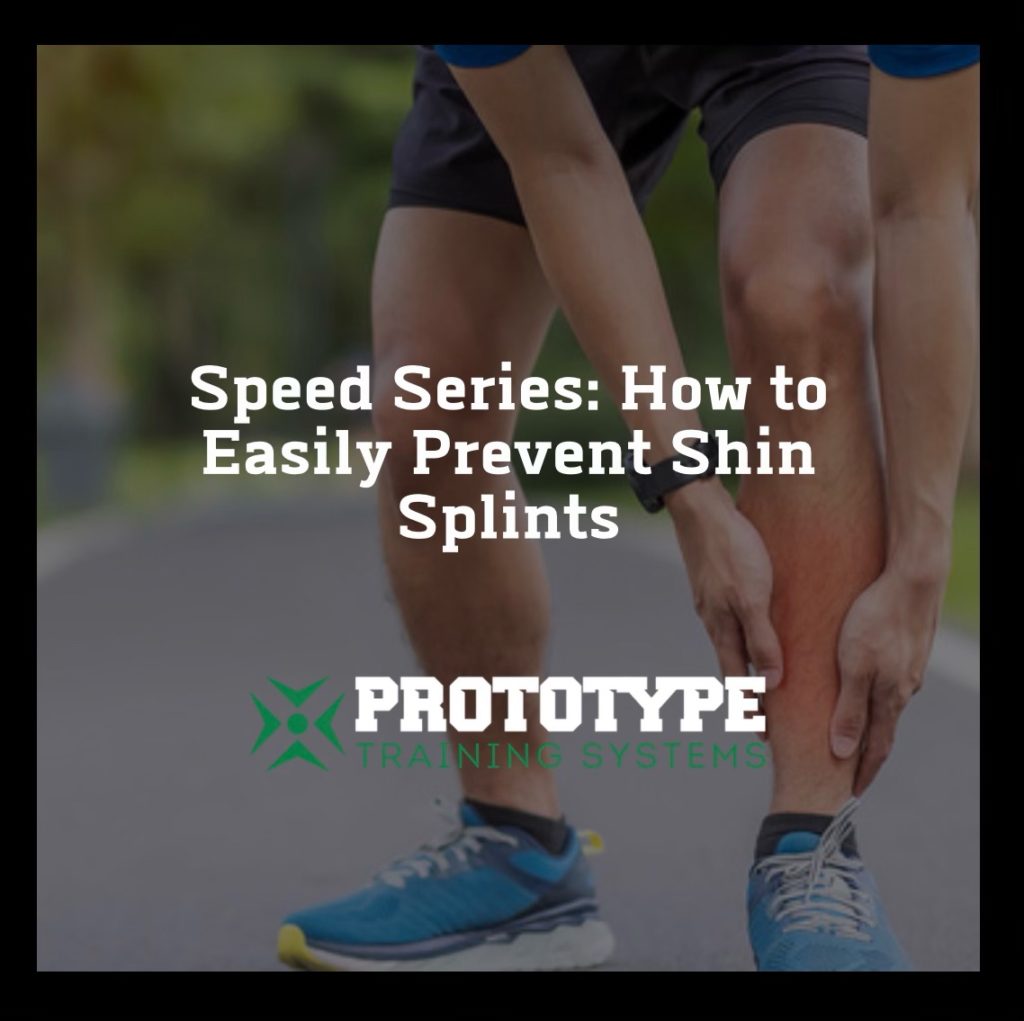
By: Evan Cleveland
Does your running season often come to a grinding halt courtesy of shin splints?
Some people say that shin splints aren’t real. My high school track coach was guilty of this! It is in fact a real condition called tibial stress syndrome (medial or anterior). This is typically an overuse injury caused by large volumes of running in athletes that demonstrate some sort of biomechanical error in their gait. Improper footwear can also be a contributing factor as well.
I joined my high school track and field team for the spring season during my sophomore year. Long story short, I ended up with shin splints by the end of the season. I figured it would fix itself with time, but after a couple months I figured I had to do something to actively heal it. I was unable to find any help from my coach or teammates, so I did some research on my own. I ended up devising a program consisting of different exercises, stretches, and self myo-fascial release (foam rolling) in order to remedy the injury.
This rehabilitation regimen of mine ended up successful, the pain was gone within about a month (off-season). So how did I fix it?
Let’s take a look at a common case of shin splints:
Bob is an avid runner. He enjoys going on runs in his free time, averaging about thirty miles on the road weekly. Bob is very busy, so he doesn’t bother taking the time to warm up or cool down. He’s been using the same sneakers for three years now. They feel pretty worn out, but they get the job done. Bob also happens to have weak tibialis anteriors (front shin muscles).
This is a dangerous combination! Think about how many times your foot is making contact with the ground. The average ground reaction forces you experience during a run can increase up to THREE times your body weight. That means every step you take, one single leg is experiencing six times the normal load it feels when you’re standing on two legs. To put this further into perspective, the average person takes about 1500 steps in a mile run. That means a marathon would take about 40,000 steps (26.2 miles). Bob is averaging just over a marathon’s distance in a week. In conclusion, he is putting triple his body weight on each leg for roughly 90,000 steps per month, PLUS between 1-1.5 times his body weight every step he takes to walk. This high volume mixed in with bad footwear and weak shins leading to improper running gait spell nothing but disaster for Bob!
Earlier I mentioned that this condition is caused by improper running gait. Bob may demonstrate the predominant scenario of someone who develops shin splints. Shin splints are generally caused by repetitive improper contact of the midfoot on the ground. This puts the tibialis anterior/posterior (shin muscles) into a state of microtrauma. In order to fix this, you need to stretch and strengthen these muscles so they can support the force of your foot hitting the ground in a safe and controlled manner. Typically the case is weak shins and tight calves, but it’s always a good thing to be mobile AND stable wherever possible.
NOW, LET’S GET INTO THE MEAT AND POTATOES
Well, the title of this blog post is of course “How to Easily Prevent Shin Splints”. Unfortunately there is no be-all and end-all to shin splints (or any injury for that matter), but I’ll explain that later. I’m going to share with you the simple routine I used to fix my shin splints in high school. In my opinion, this will dramatically reduce the chance of developing shin splints for most people.
For the busy people that didn’t watch: do heel walks and toe walks, then calf stretch and shin stretch for 3 days a week to prepare your ankles for the running season.
Here is where the condition gets tricky – while runners may be the most common population to end up with shin splints, it can even be caused by just walking! To further complicate things, it isn’t always a direct result of a weak tibialis anterior (alone). Our movement functions across what is referred to as the “kinetic chain”, basically meaning that what happens at your ankles affects what happens at your knees and consequently hips, or what happens at your spine affects your hips etc. One possible example of this is that your feet are set into an inefficient position when walking due to having weak glutes, rather than just a weak tibialis anterior. This is why we reinforce proper mechanics in our programs at Prototype, it can save you from muscle imbalances and the injuries that result from them!
About Evan:

